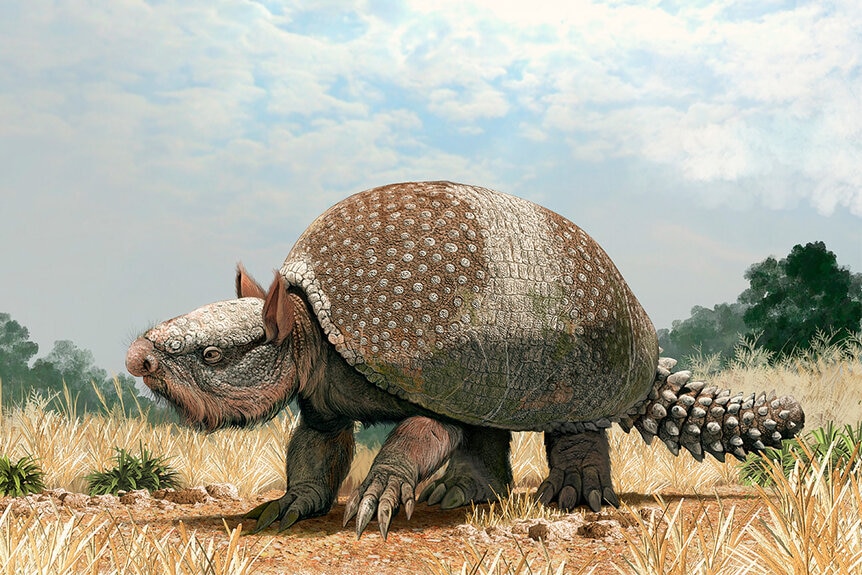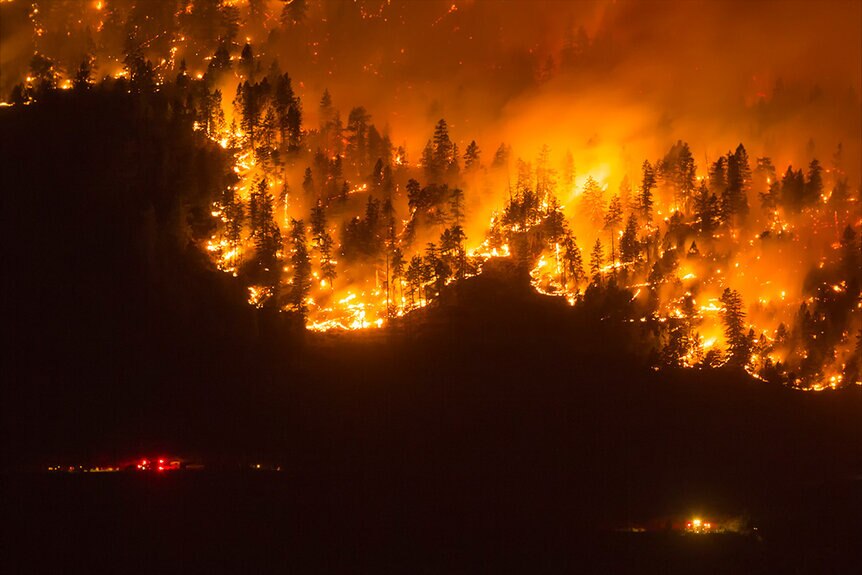Create a free profile to get unlimited access to exclusive videos, sweepstakes, and more!
Wildfires Drove Ancient Extinctions and Scientists Worry It’s Happening Again
Things are heating up again.
In NBC’s La Brea, streaming now on Peacock, a sinkhole opens up beneath the titular L.A. tar pits, swallowing up everything (including people) unfortunate enough to be standing atop it. That sinkhole reveals a portal into an ancient past filled with all manner of extinct animals.
In the real world, the La Brea tar pits actually do offer a window (if a murky one) into the deep past, by way of the fossil record. Scientists can learn a lot about what species were surviving and thriving in the region, by what animals they pull from the muck and when they stop showing up. A recent study published in the journal Science used La Brea fossils and nearby sediment samples to dial in on a cause for the global megafauna extinction.
What Killed the Megafauna 13,000 Years Ago?
While most large animal species are no longer roaming North America, the fossil record clearly shows their abundance in the relatively recent past. Travel back roughly 13,000 years and you’ll find a continent patrolled by giant armadillos, mastodons, mammoths, dire wolves, giant ground sloths, giant beavers, and camels, just to name a few.
RELATED: How Teeth Saved Humanity’s Primate Ancestors From a Secret Sixth Mass Extinction
Then, about 13,000 years ago, they all disappeared, with a few exceptions. Similar megafauna extinctions occurred all over the world at roughly the same time and there has been an ongoing debate as to whether humans or the climate were to blame. The new study suggests it was a team effort, with humans and the climate joining forces to reshape the world and wipe out large animal species everywhere.
Researchers examined 172 fossil samples from eight different species, all recovered from the tar pits. Because the tar pits preserve collagen, specimens can be precisely dated to between 10,000 and 15,600 years ago, covering both sides of the extinction event. In the oldest parts of the sample, every major megafaunal species shows up.
Then, about 13,000 years ago, camels and sloths disappeared from the record. A few hundred years later, the rest of them followed suit. Only coyotes remained.
With their date range constrained to a period of a few hundred years, researchers turned to sediment samples from southern California’s nearby Lake Elsinore. The samples showed a dramatic increase in charcoal 13,200 years ago, right when species were vanishing from the area. That charcoal suggests an uptick in the number and severity of wildfires, some of which were likely set by people.
The bottom line is their extinction came from several directions all at once. Human populations were increasing, driving higher hunting pressures. The climate was warming, causing droughts. Water would have been harder to come by and fires would have spread more readily. Several plant species disappeared, burnt to a cinder, replaced by more fire-resistant species, leaving some species without the foods they depend on. And all of this was probably self-supporting.
RELATED: The Extinction of Saber-Toothed Cats and Dire Wolves May Have Been Written in Their Bones
Fires killed off certain plant species, which in turn killed off certain herbivores. The plants which filled the gap had no grazers, so they built up, dried out, and burned more easily. And the cycle continued until many of the world’s large species were gone.
Not only does this offer a solution to one of history’s great mysteries, but it also offers a warning for today. The conditions which drove that extinction event are mirrored in today’s climate. Temperatures are rising, wildfires are increasingly common, and our influence on the environment is greater than ever before.
There is an opportunity, perhaps, to learn from the mistakes of the past. The odds are that humans will make it through the current climate crisis, but the world might be a lonelier place on the other side.
Want to learn from the fantastical past? See it for yourself in La Brea, streaming now on Peacock!
































